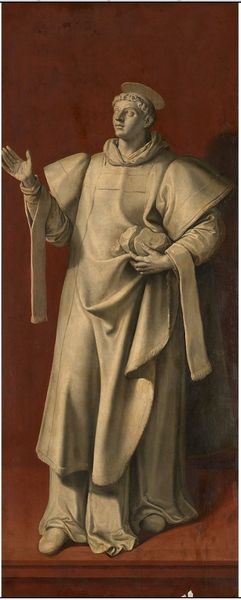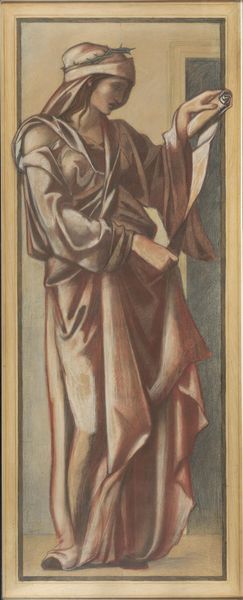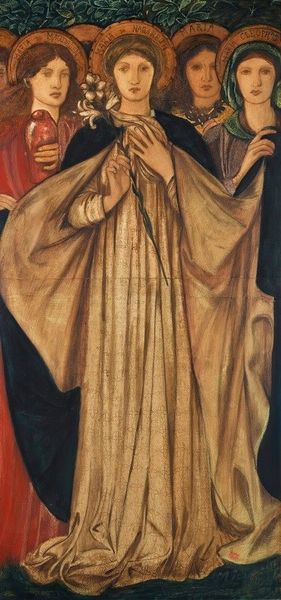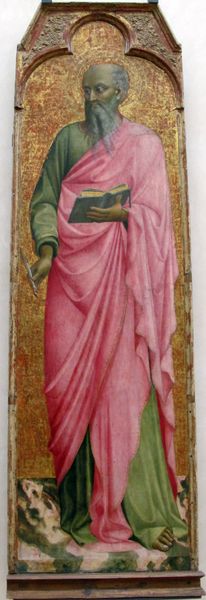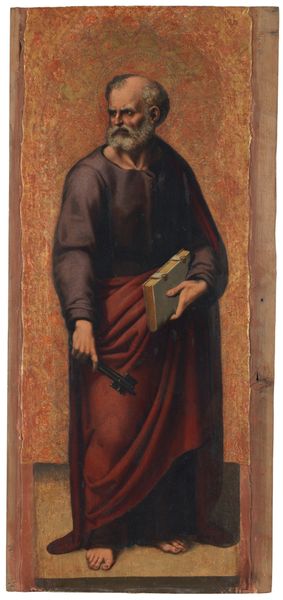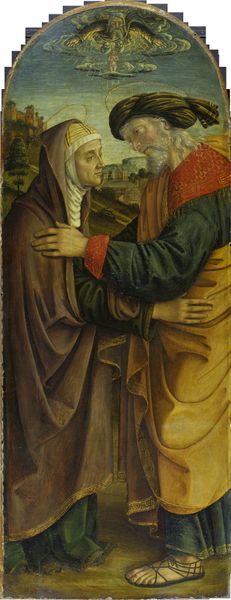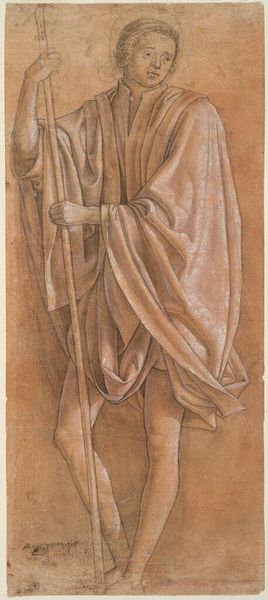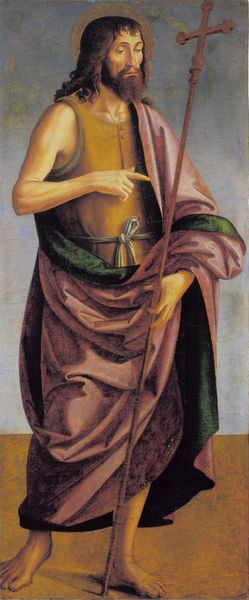
painting, oil-paint
#
portrait
#
painting
#
oil-paint
#
mannerism
#
figuration
#
history-painting
#
academic-art
Copyright: Public domain
Editor: This painting is titled "St. Thomas," by Maarten de Vos, done with oil paints. It feels like I'm looking at a statue come to life, a monochromatic figure against that stark red background. How do you see this work interacting with the viewers of its time? Curator: Considering its possible context, one must explore how Counter-Reformation ideals used art as a didactic tool. Artists were urged to create images that would clearly communicate religious narratives and inspire piety. What effect do you think that might have had on artists like de Vos? Editor: So, art as a form of persuasive messaging. Perhaps that explains the strong, direct gaze, trying to engage the viewer? Curator: Precisely. Think of the late 16th century, a period rife with religious and political turmoil. Images of saints, like St. Thomas here, were vital tools for reinforcing Catholic doctrine. How do you think the image of a learned saint with a book resonated in a society grappling with religious debates and the rise of printing and literacy? Editor: I see. The book isn't just a prop; it represents knowledge and faith, at a time when both were being challenged. Curator: And that staff he's holding—what might that symbolize in relation to his role within the church? Editor: Perhaps a sign of authority? It grounds the image. He’s got one bare foot... is that about poverty and humility? Curator: That’s interesting… consider if this was displayed in a grand church, full of wealthy patrons. Might this have sparked conversation or even a bit of guilt? These images were meant to make people reflect on their own lives. Editor: I never considered art quite this way. It’s not just aesthetics; it’s a negotiation of power, religion and public image. Curator: Exactly! De Vos's "St. Thomas" serves as a reminder that art doesn’t exist in a vacuum.
Comments
No comments
Be the first to comment and join the conversation on the ultimate creative platform.
